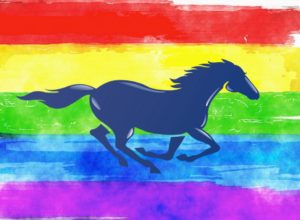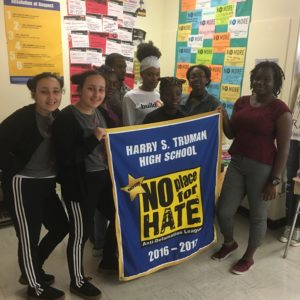June is Lesbian, Gay, Bisexual, Transgender, and Queer (LGBTQ) PRIDE Month. Now more than ever, we see an increasing need for such designations, in the face of growing oppression, hate, and ignorance. To get a better idea of how homophobia and anti-LGBTQ bias impact youth, take a look at the statistics below –
- 42% of people who are LGBT report living in an unwelcoming environment.
- 80% of gay and lesbian youth report severe social isolation.
- 6 in 10 LGBT students report feeling unsafe at school because of their sexual orientation.
- 90% of teens who are LGBT come out to their close friends.
- In 2013, 92% of adults who are LGBT said they believe society had become more accepting of them than in the past 10 years.
- Young people who are LGBT and who are “out” to their immediate families report feeling happier than those who aren’t.
- While non-LGBT students struggle most with school classes, exams, and work, their LGBT peers say the biggest problem they face is unaccepting families.
- The “Don’t Ask, Don’t Tell” policy, which restricted lesbians, gays, and bisexuals in the military from openly serving, was lifted in 2011. People who are transgender are not permitted to serve openly yet.
- In July 2009, the Senate approved the Matthew Shepard Act, which outlaws hate crimes based on both sexual orientation and gender identity.
- The Employment Nondiscrimination Act passed Congress in 2007 is the act that prohibits discrimination of sexual orientation in the workplace, specifically during hiring.
- Studies indicate that between 25% – 50% of homeless youth are LGBT and on the streets because of their sexual orientation or gender identity.
- Gay teens are 8.4 times more likely to report having attempted suicide and 5.9 times more likely to report high levels of depression compared with peers from families that reported no or low levels of family rejection.
- The average GPA for students who were frequently physically harassed because of their sexual orientation was half a grade lower than that of other students.
Understanding homophobia and anti-LGBTQ bias is the first step in combatting it. Education and awareness are also important, especially since homophobia is often misunderstood. There are plenty of reasons for that. Let’s break down a few of them here.
- Perception – Phobia implies fear, but are people really afraid of LGBTQ identified folks? Studies indicate that homophobia is more likely rooted in fear of perception, for example, seemingly supporting LGBTQ rights might make people think you are LGBTQ yourself.
- Religion – In many religions, people find justification for opposing homosexuality, calling it a sin, but that is a very limited use of scripture. There are far more references in scripture to forgiveness.
- Gender Norms – People can be so rigidly set in the expectations surrounding gender roles, but that limits our understanding of how people identify along gender lines. There is no “correct” way to be a man or to act like a lady. Gender identification, gender expression, and sexual orientation are separate parts of our identity. Please check out the Gender Unicorn image at the end of this post (http://www.transstudent.org/gender).
Being a teenager is hard enough, navigating school work, families, and relationships. PRIDE month gives us the opportunity to see how LGBTQ youth have additional stressors to contend with. We have to remember that PRIDE is not a parade, it’s a march and was born out of resistance. Teachers, Administration, parents/guardians, and peers can play a vital role in this resistance, by establishing a culture of respect and support. To learn more, we encourage you to visit glsen.org, glaad.org, and pflagnyc.org.
Happy PRIDE!







